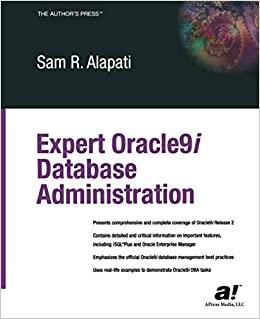Question
Reverse words on line Objectives Practice taking program arguments Practice using C libraries and functions Practice converting strings to integers Practice manipulating C strings Practice
Reverse words on line
Objectives
Practice taking program arguments
Practice using C libraries and functions
Practice converting strings to integers
Practice manipulating C strings
Practice top-down program design and reading pseudocode
Overview
For this lab, you will write a program that reads N lines of data from the command-line, one entire line at a time, and reverses the words of each line. In this example, N = 1:
[esus] $ ./lab8 1 the quick brown fox jumps over the lazy dog dog lazy the over jumps fox brown quick the
N is a number provided via command-line argument.
Details
Requirements:
Take in a single command-line argument.
Print an error message if not enough or too many program arguments
Convert it to an integer (print error and quit if entered less than 0)
Read in that many lines from standard input.
For each line, scan the entire line using fgets.
Implement a function to reverse the words in the line, and call it on every input line.
The words must appear in reverse order, but still readable from left to right.
NOTE: Punctuation and extra spaces should be omitted in the reversed string
Print out the reversed line
Command-line argument
Command-line arguments are a way for you to provide input to the program at the moment it is executed. For this program, you will use a single command-line argument to provide the number of lines to be read from standard input, as an integer greater than or equal to zero.
Convert string to int
To obtain the value of N from this command-line argument, you must convert it to an int. Use the function strtol to accomplish this. With the call to strtol, you must provide the 'base' of the number returned. In our case, we want a standard 'base 10' number returned. In addition, you will need to use type casting to convert the result of the function back into an int.
int N = (int) strtol( str, NULL, 10);
NOTE: Be sure to #include
Standard Input using fgets
In this lab, you will use a function called fgets to read input from the keyboard. This function is also used to read data from files, however we can use it to read keyboard input by specifying the global variable stdin as the file pointer parameter. Up until now, we have typically used scanf to accomplish this, but fgets is actually better, because we can control how much data is read in. This helps to prevent buffer overflow errors, in which the string is stored in memory that is not allocated for it. To read input in this way, use the function like this:
#define SIZE 80 ... char str[SIZE]; if ( fgets( str, SIZE, stdin ) ) { // input was successful } Algorithm to reverse a string
You may attempt to design an algorithm to solve this problem on your own if you'd like. However, you may also implement a C language version of the pseudocode provided below.
PROCEDURE reverse( string line ): declare local strings: temp, word idx <- string length of line word_len <- 0 // scan thru characters one by one loop until idx < 0: if line[ idx ] is a space and word_len > 0: copy word_len characters from line to word concatenate word + " " on end of temp word_len <- 0 // reset word length to 0 else if line[ idx ] is alphanumeric: word_len <- word_len + 1 end if end loop // copy over the last word after the loop (if any) if word_len > 0: copy word_len characters from line to word concatenate word on end of temp end if line <- temp // copy temp back into line end PROCEDURE
Functions of interest
stdio.h:
fgets
Read data from files or standard input
stdlib.h:
strtol
Convert a string to a long integer
ctype.h:
isalnum
Checks if a character is alphanumeric
string.h:
memset
Sets memory to a specific value. Useful to re-initialize local string variables to 0 for re-use in a loop.
strncpy
Copies some number of characters out of a string.
strlen
Gets the number of characters in a string (not including the null terminator).
strcat
Concatenates one string onto another.
strchr
Searches a string for the first occurrance of the given character
Example Execution
[esus] $ ./lab8 ERROR: Please provide an integer greater than or equal to 0 [esus] $ ./lab8 -3 ERROR: Please provide an integer greater than or equal to 0 [esus] $ ./lab8 2 the quick brown fox jumps over the lazy dog dog lazy the over jumps fox brown quick the what is love love is what [esus] $ ./lab8 1 a test... i demand a test! test a demand i test a
Compile & Test
Compile your program using this gcc command. c99 is a shortcut for running gcc -std=c99, which uses the C99 standard instead of the default C89 standard.
$ c99 -Wall lab8.c -o lab8
Step by Step Solution
There are 3 Steps involved in it
Step: 1

Get Instant Access to Expert-Tailored Solutions
See step-by-step solutions with expert insights and AI powered tools for academic success
Step: 2

Step: 3

Ace Your Homework with AI
Get the answers you need in no time with our AI-driven, step-by-step assistance
Get Started


